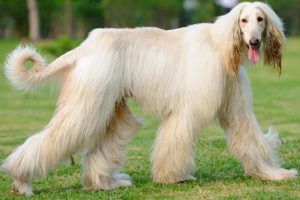Tips For Dealing With Your Long-Haired Dog This Summer
 When it comes to dogs, it’s no surprise that long-haired dogs are extremely gorgeous. Unfortunately with all of the beauty and fluff that they possess, long-haired dogs come with a bit more work when it comes to grooming them. In order to groom long-haired dogs, regular bathing is a necessity. On average, you should be bathing and grooming your dog once a month with two months being the absolute longest you go in between washes. Some dogs can be groomed every other week so long as you are using a dog shampoo that is gentle. Be wary of over bathing your dog as washing too frequently can result in dry skin.
When it comes to dogs, it’s no surprise that long-haired dogs are extremely gorgeous. Unfortunately with all of the beauty and fluff that they possess, long-haired dogs come with a bit more work when it comes to grooming them. In order to groom long-haired dogs, regular bathing is a necessity. On average, you should be bathing and grooming your dog once a month with two months being the absolute longest you go in between washes. Some dogs can be groomed every other week so long as you are using a dog shampoo that is gentle. Be wary of over bathing your dog as washing too frequently can result in dry skin.
When bathing a long-haired dog, matts are a very real issue and requires plenty of patience when bathing. Be sure to use lots of pet shampoo and work from the head down. Starting at the head and then working down from the back will allow you to lather the entire coat evenly and prevent you from having to go back to any missed areas. After you scrub the back and torso, move on to spot clean areas like the belly, chest, legs, and tails. Rinse from head to toe, and then let your dog shake off all of the excess water. Especially with long-haired breeds, it is important to let your dog shake dry as it makes the drying process a lot more manageable. Air drying is the best method for your dog’s skin even though it takes the longest and it might leave your dog with a bit of a “wet dog” smell. Blow drying might lead to skin irritation. Towel drying is the happy medium wherein you can dry your dog 90% of the way and let them air dry the last 10%. Even if you air dry, remember to wipe the ears and paws at these sensitive areas to avoid bacteria grown.
After bathing, brushing should be done immediately to remove any excess dog hair that has come off during the bath. While brushing should be a daily part of your dog’s grooming routine with a long-haired dog, it is especially important in the first few days after a bath. Bathing stimulates the skin and promotes new hair growth. As a result, your dog will shed the most right after a rinse. It is crucial to help the regenerative process of hair growth by eradicating all of the hair your dog is trying to rid itself of.
Some may choose to clip their dogs coat after cleaning. If you are trying to go for a certain cut, decide on the shape you are trying to achieve and then clip small amounts at a time to ensure you don’t take too much away. Clipping is one of the most challenging and potentially scary parts of grooming a long-haired dog. Because of this, there is no shame in reaching out for professional assistance. At Olsen Veterinary Clinic, we have an in-house groomer! Contact Karen with Prancing Paws Grooming at 618-910-7581 with any questions or to schedule a grooming appointment!
One of the most integral parts of grooming is cleaning your dog’s ears. Dog’s ears are one of the most sensitive areas but also one of the most susceptible areas to nasty things like yeast infections or mites. After bathing, take time to clean the inside of your dog’s ears with cotton or a similar material that has been lightly covered in witch hazel. Be vigorous in cleaning your dog’s ears without being rough or obtrusive. It is essential to clean all of the flaps and folds inside the ear but be careful to avoid entering the ear canal.
As always, if you have any questions or concerns, feel free to contact Olsen Veterinary Clinic at 618-656-5868.
